The Art Detective
Gallerist Almine Rech Seems to Have the Midas Touch. But Are All Her Artists Worth Their Weight in Gold?
Long established in the blue-chip market, the gallery has begun diversifying its portfolio, with surprising results.
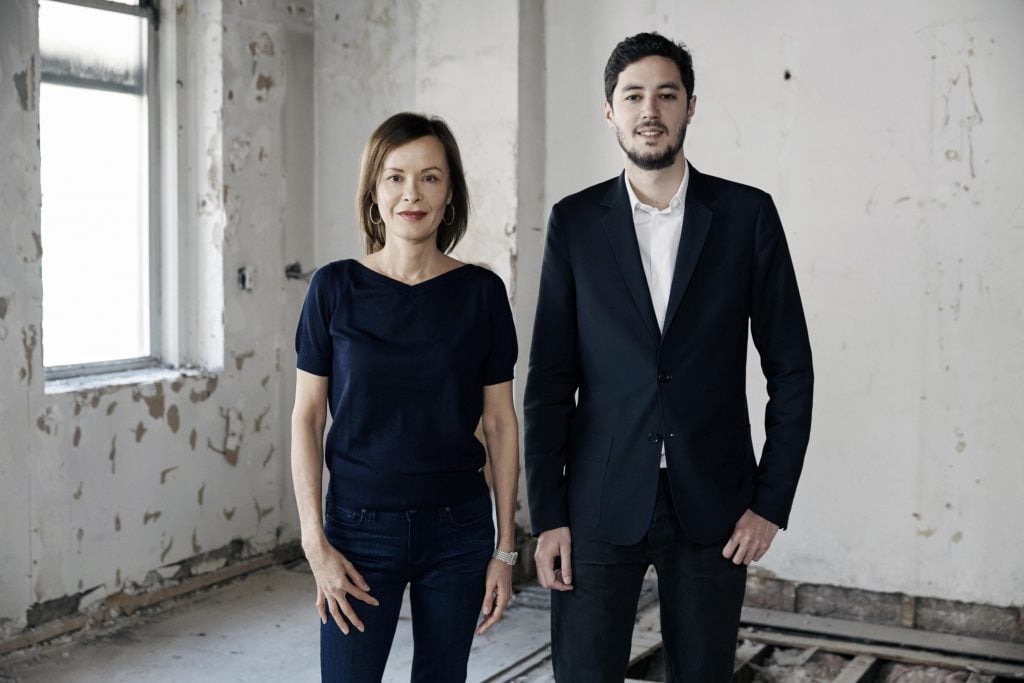
Long established in the blue-chip market, the gallery has begun diversifying its portfolio, with surprising results.

Two years ago, on one of her regular visits to Malaga, Spain, art dealer Almine Rech made an unusual stop at a studio of a local artist, Javier Calleja.
Studio visits are common for Rech, who owns seven gallery spaces and works with almost 150 artists and estates. Visiting artists is one of the most rewarding aspects of her job, she said in a recent interview. Calleja was different though; he was not on her radar. And Malaga, while the birthplace of Pablo Picasso (whose grandson Bernard Ruiz-Picasso is Rech’s husband) isn’t exactly an art capital. But a client suggested Rech meet Calleja while in town on Picasso business, and she agreed.
There was scant international demand for Calleja’s cartoonish, big-eyed characters at the time. His artworks only began appearing at auction in 2019, with 11 sales totaling $262,000, according to the Artnet Price Database. Two years later, after his introduction to Rech, it turned into an avalanche: 153 artworks generated $14.4 million. The gallerist featured Calleja in two shows last year, a group survey of painting in New York and a solo exhibition in Shanghai. Everything sold like hotcakes—including to the Long Museum and seven other Chinese institutions. The action is starting to shift to the U.S., where a painting, Don’t Be Bad (2019), fetched $1.2 million at Sotheby’s in New York last month. More gallery shows and art fairs are on tap this year.
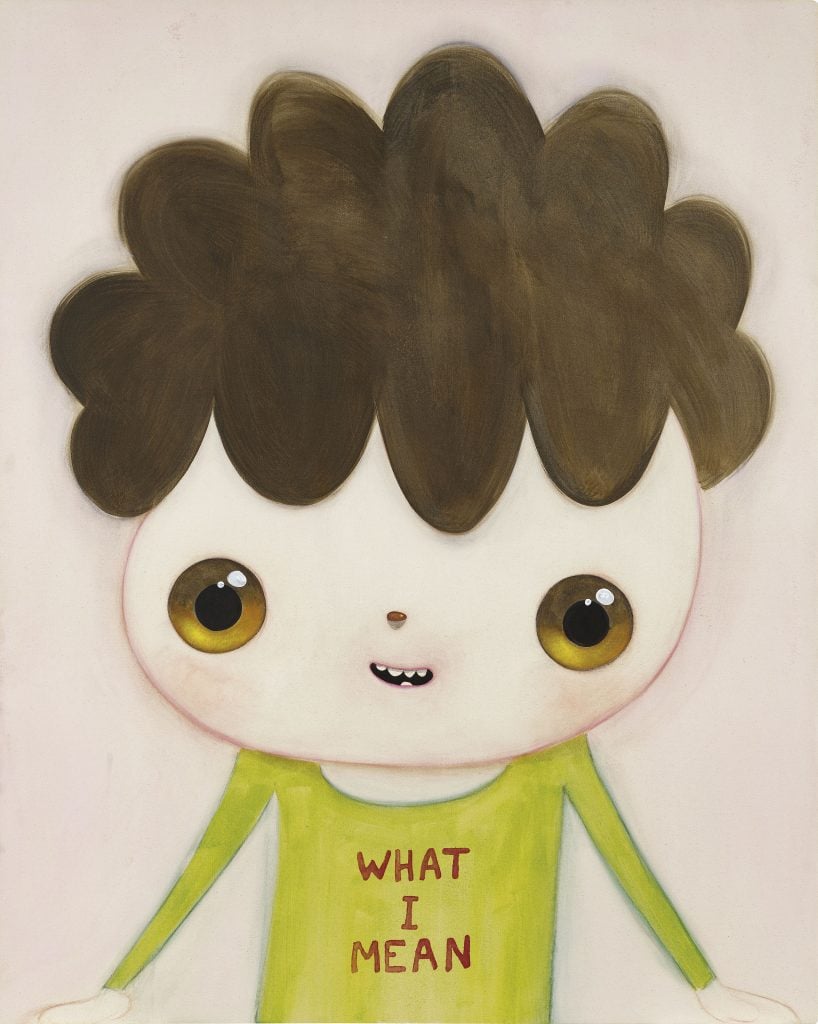
Javier Calleja, What I Mean (2017). Courtesy of Christie’s Images, Ltd.
It’s hard to say what’s more surprising: That a chic, blue-chip operation like Almine Rech took on an emerging artist like Calleja, who’s channeling Yoshitomo Nara all too well, or that a booming market for Calleja’s art has formed seemingly overnight.
Calleja, however, is not alone in experiencing Rech’s golden touch. Long associated with heavy-hitters like James Turrell and Joseph Kosuth (not to mention the Picasso connection), Almine Rech has lately become a breeding ground for emerging artists at an inflection point in their careers—all with the kind of mind-boggling auction results indicating that silly money has entered the art market. Auction prices for the psychedelic landscapes of Huang Yuxing, for instance, have tripled to $20 million in the space of a year.
In addition to Calleja and Huang, over the past five years or so, the gallery has taken on some of the most sought-after new names, with an emphasis on artists of color and voguish figurative styles: Genesis Tramaine, Otis Kwame Kye Quaicoe, Nathaniel Mary Quinn, Vaughn Spann, Chloe Wise, Ewa Juszkiewicz, and Claire Tabouret.
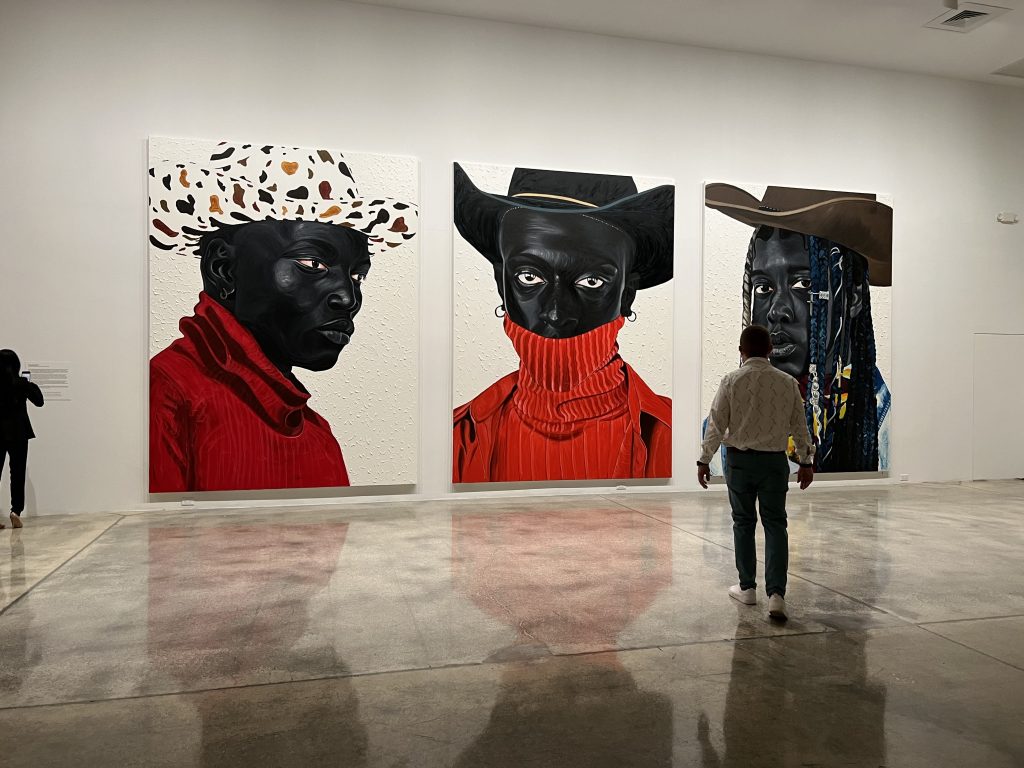
Otis Kwame Kye Quaicoe’s works on view at the Rubell Museum in December 2021. Photo: Katya Kazakina.
Up next in New York is a solo show by the 76-year-old painter Scott Kahn, whose jewel-toned landscapes are suddenly selling for $1 million. Among the latest arrivals is Emma Stern, born in 1992, whose figurative paintings combine traditional methods and 3D modeling.
“For me it’s not about the generation or the age of the artist,” Rech said in a recent interview. And working with artists at different points in their careers is “a win-win. It adds new blood to the established and established blood to the young.”
When Rech opened her eponymous gallery in Paris in 1997, Turrell, a Light and Space pioneer, was the first artist to join (she had shown him previously at Galerie Froment–Putman, which she co-owned). Initially, the gallery was focused on conceptual and Minimalist art, working with Kosuth, Richard Prince, and John McCracken. But Rech says she has always admired the “energy” of younger artists, and in the 2010s the gallery began working with popular up-and-comers like Joe Bradley and Alex Israel.
“The art fair committees weren’t very happy” with the mixing, she said. “They would say: ‘Why don’t you just show blue-chips?’”
These days, of course, showing emerging artists alongside established ones has become much more accepted—and in the past few years ever more urgent—even for mega-galleries. Loie Hollowell has done well at Pace since 2019, Gagosian recently added Louise Bonnet to its stable, and Avery Singer joined Hauser and Wirth.
“The whole art world is focused on emerging these days, because that’s where the energy is,” said Bill Powers, the tastemaker owner of Half Gallery, who has helped emerging artists transition to galleries like Almine Rech, Blum and Poe, and Gagosian. “Collectors and galleries want to feel relevant more than blue-chippy.”
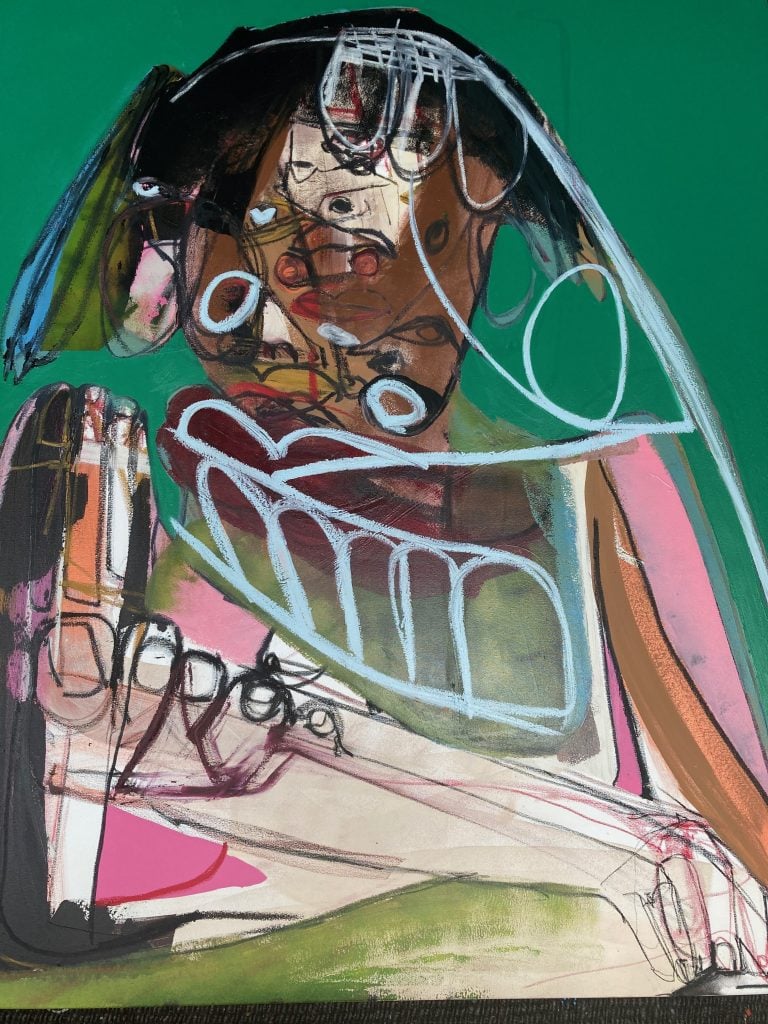
Genesis Tramaine, Black Woman Saint Cleans Jesus (2021), reimagining the Summer Walker album Over It (2019). Courtesy of the artist and Almine Rech.
Rech, however, maintains that her stable has expanded organically. The gallery confirmed that it currently represents about 60 artists. She frames the steady addition of gallery locations—Brussels in 2007, a second space in Paris in 2013, London in 2014, New York in 2016, Shanghai in 2019, and a third in Paris in 2020—as a question of sustainability and flexibility for her artists. The gallery is planning yet another expansion; a new space is on the horizon in downtown Manhattan, as well as pop-ups. “When you start having a lot of galleries, it allows you to show artists at a good pace for them,” she said. “If you have only one or two places, of course, you cannot take another artist, even if you fall in love with the art.”
Rech says she realized the need to be on the ground in Asia after a director had to fly from New York to Hong Kong and back in one day to do a showing. “It was crazy,” Rech said. More than most international galleries, Rech has been able to capitalize on intense demand for contemporary art in mainland China, which has surged during the pandemic—today, auction records are just as likely to be set in Hong Kong or Shanghai as in New York or London. Although the gallery did not specify what percent of its business its clients there account for, many of the newly added artists—such as Calleja and Huang—have been especially popular in the Asian market.
“Chinese museums, it seems like there’s a new one every day, and they all are trying to grow their collections,” said Paul de Froment, Rech’s son who runs the New York operation. “You have American artists who blow up in Asia, and then there’s a boom in the U.S. market that follows the Asian trend.”
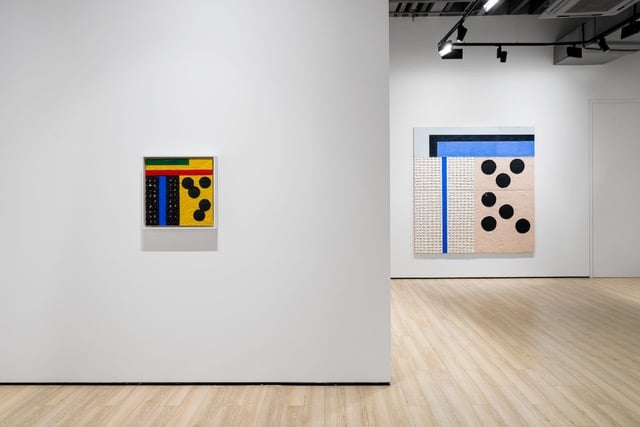
Installation view, “Vaughn Spann: Pups!” at Almine Rech Shanghai, 2021. © Vaughn Spann. Courtesy of the artist and Almine Rech. Photo: Alessandro Wang.
After opening in New York with a historic pairing of Picasso and Alexander Calder, under de Froment, the program soon started trending younger, with shows of Jennifer Giudi and Farah Atassi.
That is not an uncommon phenomenon, says art advisor Todd Levin. “When you have a generational gallery, it is more likely that they have the blue chip and the new,” he said, citing similar dynamics at Lisson and Pace, both now steered by their founders’ sons. “It feels less like a gold-rush attempt to be current than a natural progression.”
De Froment said the gallery works with dealers, curators, and collectors to identify new artists. What could look like poaching artists from smaller players is in practice, he says, a cooperative effort with plugged-in incubators to discover and elevate fresh talents. Tramaine, whose third solo show with the gallery is closing this week in New York with all works sold, at prices ranging from $80,000 to $165,000, was first showing with Richard Beavers Gallery in Brooklyn, which focuses on artists of color.
“We like his eye and try to find mutually beneficial collaborations,” de Froment said, noting that the works for the first two solo shows were consigned by Beavers to the gallery. Two more artists discovered by Beavers, Marcus Jansen and Phyllis Stephens, have followed Tramaine to Rech.
Other recent additions to the Almine Rech roster were shown at Powers’s Half Gallery, which used to be located next door on East 78th Street. The first artists to transition were Justin Adian and Genieve Figgis. Since 2018, Powers has curated five group shows for Rech.
Powers said Half Gallery gets a cut from sales of the first two shows Almine Rech does with its artists. “You can either have artists ditch you for greener pastures, like Shara Hughes going to [David] Kordansky, or play a role in helping those painters reach a global stage,” he said. “I’ve always thought it’s better to be a shoulder to stand on.”
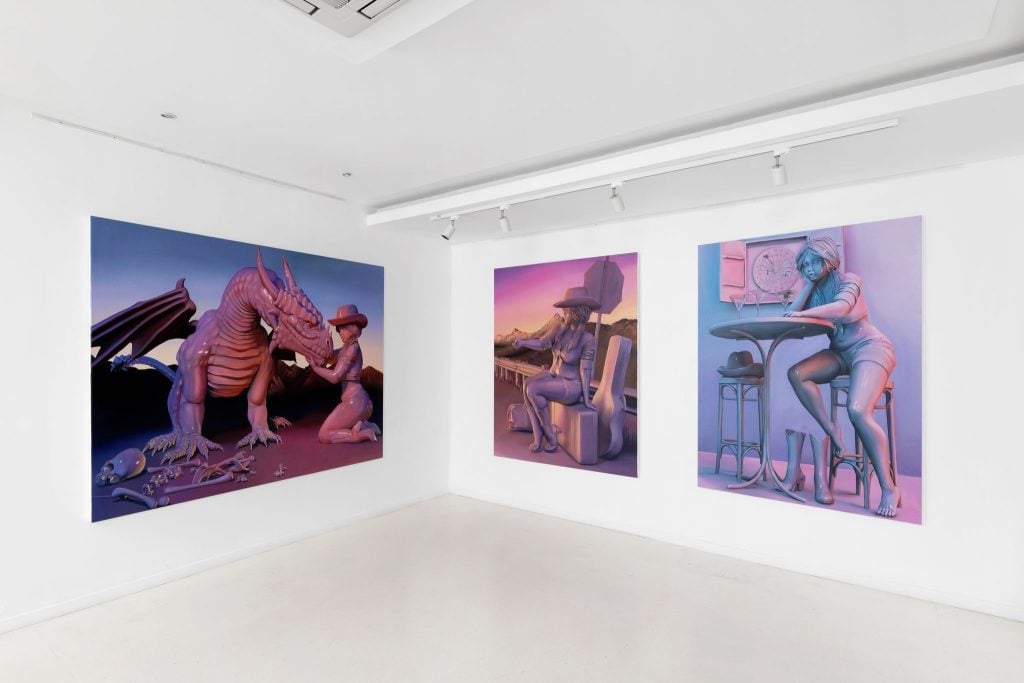
Installation view, “Emma Stern: Boy, It Feels Good To Be A Cowgirl,” at Almine Rech Paris, 2021. © Emma Stern. Courtesy of the artist and Almine Rech. Photo: Aurélien Mole.
Joining a powerful, international gallery can be transformative for an artist. Just three years ago, when Scott Kahn had a solo show at Ober Gallery in Kent, Connecticut, prices for his works ranged from $5,000 to $12,000. Not a single painting sold.
But after the late phenom Matthew Wong tipped his hat to Kahn’s inspiration on social media, dealers came sniffing. Rech won out, and now Kahn is preparing for his second solo show with the gallery. It will open in New York on May 3 and include 15 works, many never seen before, dating from 1988 through present. Prices range from $290,000 to $1 million.
“Almine is very attentive and sensitive to her artists’ concerns,” Kahn said in an email. “For me, at this late stage in my life, it means placing my work carefully and ensuring my legacy.”
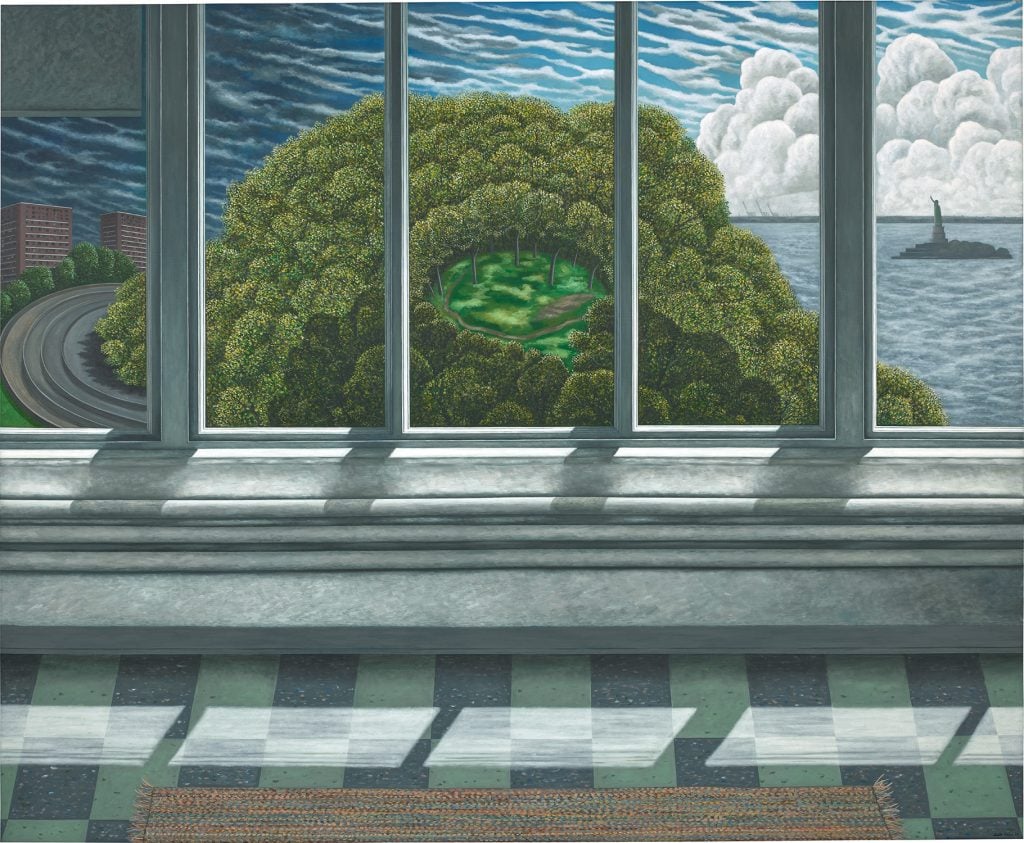
Scott Kahn, Cadman Plaza (2002). Courtesy of Phillips.
Kahn’s auction prices have surged since he joined Rech. One painting, Cadman Plaza (2002), fetched $963,203 at Phillips in association with Poly Auction last November. On March 1, the landscape Into the Woods (2016) sold for $898,160 at Christie’s in Shanghai. Both lots obliterated their high estimates. This May, more canvases by the artist will head to the block, he said, and there’s a forthcoming solo exhibition at the Long Museum.
The dealer doesn’t have an immediate explanation for the sudden market success of her artists and denied that the gallery engages in any propping-up of prices at auction.
“I cannot explain that by my own actions,” she said. “I am not going to bid on a Scott Kahn so that it will make $1 million. We aren’t able to do that anyway.” The gallery goes as far as to tell its clients about the upcoming auctions of the artists they have been waiting to buy.
She credits wealth creation around the world for the demand. “Some people are so wealthy, it’s like a caprice for them,” she said. “With two people for whom $500,000 to $600,000 is not important in their life, they buy it because they want it. I don’t know if that will continue forever, but for the moment it’s like that. It’s very strange.”
“The artist was also very surprised,” Rech added. “And he said: ‘We should raise my prices.’”